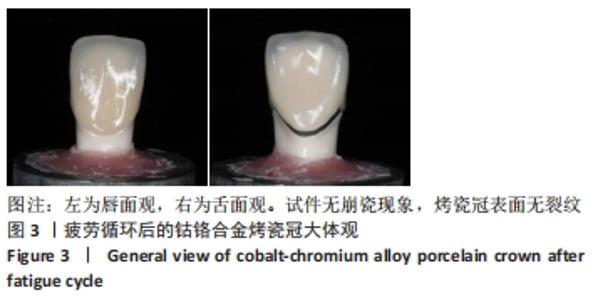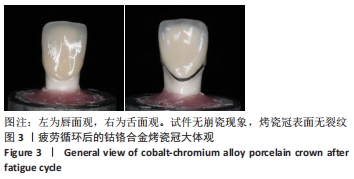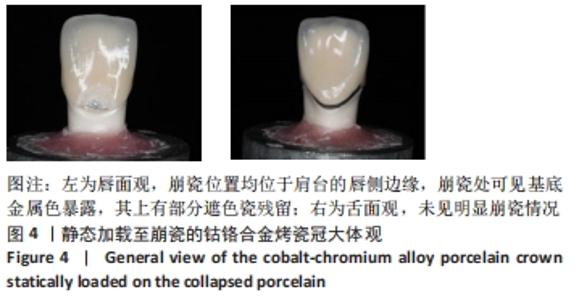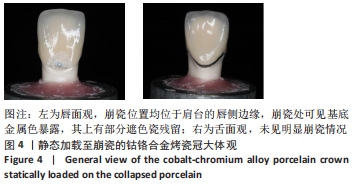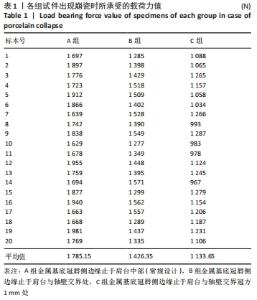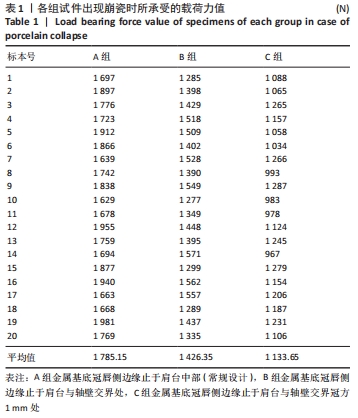[1] 董正杰,徐侃.烤瓷冠修复后龈缘黑线产生的原因及预防[J].上海口腔医学,2003,12(6):460-462.
[2] 刘健.不同种类的金属内冠烤瓷牙对形成龈缘黑线影响分析[J].临床医药文献电子杂志,2017,4(62):12131+12134.
[3] 臧红哲,李艳,赵辉.浅谈烤瓷冠修复后龈缘灰线产生的原因[J].黑龙江医学,2005,29(4):290-291.
[4] GELLER W. Dark and shadowed zones:An important aspect of the creative shading technique. Quintessence Dent Technol. 1983;(7):483-486.
[5] O’BOYLE KH, NORLING BK, CAGNA DR, et al.An investigation of new metal framework design for metal ceramic restorations. J Prosthet Dent. 1997;78(3):295-301.
[6] ANUSAVICE KJ, HOJJATIE B. Stress distribution in Metal-ceramic with a facial porcelain margins. J Dent Res. 1987;66:1493-1498.
[7] 刘亦洪,韩科,刘莉,等.肩台瓷长度对金瓷冠应力的影响[J].中华口腔医学杂志,2003,38(2):119-122.
[8] 辛海涛,马轩祥,李玉龙,等.烤瓷熔附金属全冠受载无限元法应力分析[J].第四军医大学学报,2003,24(17):1566-1568.
[9] 陈熙,程辉,李秀容.4种不同冠边缘形式的钴铬合金烤瓷冠强度的研究[J].福建医科大学学报,2016,50(6):415-419.
[10] 莫弼凡,钱成明.两种烤瓷冠颈缘设计的临床效果评价[J].新医学, 2006(2):109+126.
[11] KELLY JR, BENETTI P, RUNGRUANGANUNT P, et al. The slippery slope: critical perspectives on in vitro research methodologies. Dent Mater. 2012;28:41-51.
[12] NICOLAISEN MH, BAHRAMI G, FINLAY S, et al. Comparison of fatigue resistance and failure modes between metal-ceramic and all-ceramic crowns by cyclic loading in water. J Dent. 2014;42(12):1613-1620.
[13] STUDART AR, FILSER F, KOCHER P, et al. In vitro lifetime of dental ceramics under cyclic loading in water. Biomaterials. 2007;28:2695-2705.
[14] ROSENTRITT M, BEHR M, VAN DER ZEL JM, et al. Approach for valuating the influence of laboratory simulation. Dent Mater. 2009;25(3):348-352.
[15] WALTIMO A, KONONEN M. A novel bite force recorder and maximal isometric bite force values for healthy young adults. Scand J Dent Res. 1993;101(3):1711-1175.
[16] CRAIG RG, EL-EBRASHI MK, PEYTON FA. Stress distribution in porcelain-fused-to-gold crowns and preparations constructed with photoelastic plastics. J Dent Res. 1971;50(5):1278-1283.
[17] ANUSAVICE KJ, HOJJATIE B, DEHOFF PH. Influence of metal thickness on stress distribution in metal-ceramic crowns. J Dent Res. 1986;65(9): 1173-1178.
[18] 苏萍.金属基底冠厚度对纳米陶瓷和普通陶瓷金瓷冠抗压强度的影响[D].石家庄:河北医科大学,2011.
[19] 朱梓园,张保卫.瓷层厚度影响金瓷界面抗断裂能力的初步研究[J].中华口腔医学杂志,2002,37(1):21-23
[20] OLIVEIRA DE VASCONCELLOS LG, SILVA LH, REIS DE VASCONCELLOS LM, et al. Effect of airborne-particle abrasion and mechanico-thermal cycling on the flexural strength of glass ceramic fused to gold or cobalt-chromium alloy. J Prosthodont. 2011;20(7):553-560.
[21] 朱梓园.烤瓷熔附金属制作工艺与金瓷结合强度的研究进展[J].口腔材料器械杂志,2001,10(1):43-45.
[22] GUO J, LI D, WANG H, et al. Effect of contact stress on the cycle-dependent wear behavior of ceramic restoration. J Mech Behav Biomed Mater. 2017;68:16-25.
[23] AMER R, KÜRKLÜ D, JOHNSTON W. Effect of simulated mastication on the surface roughness of three ceramic systems. J Prosthet Dent. 2015; 114(2):260-265.
[24] REN L, ZHANG Y. Sliding contact fracture of dental ceramics: principles and validation. Acta Biomater. 2014;10(7):3243-253.
[25] 李明勇,马轩祥,李玉龙,等.前牙烤瓷修复冠、桥疲劳寿命的测定[J].中国美容医学,2011,20(5):831-833.
|
